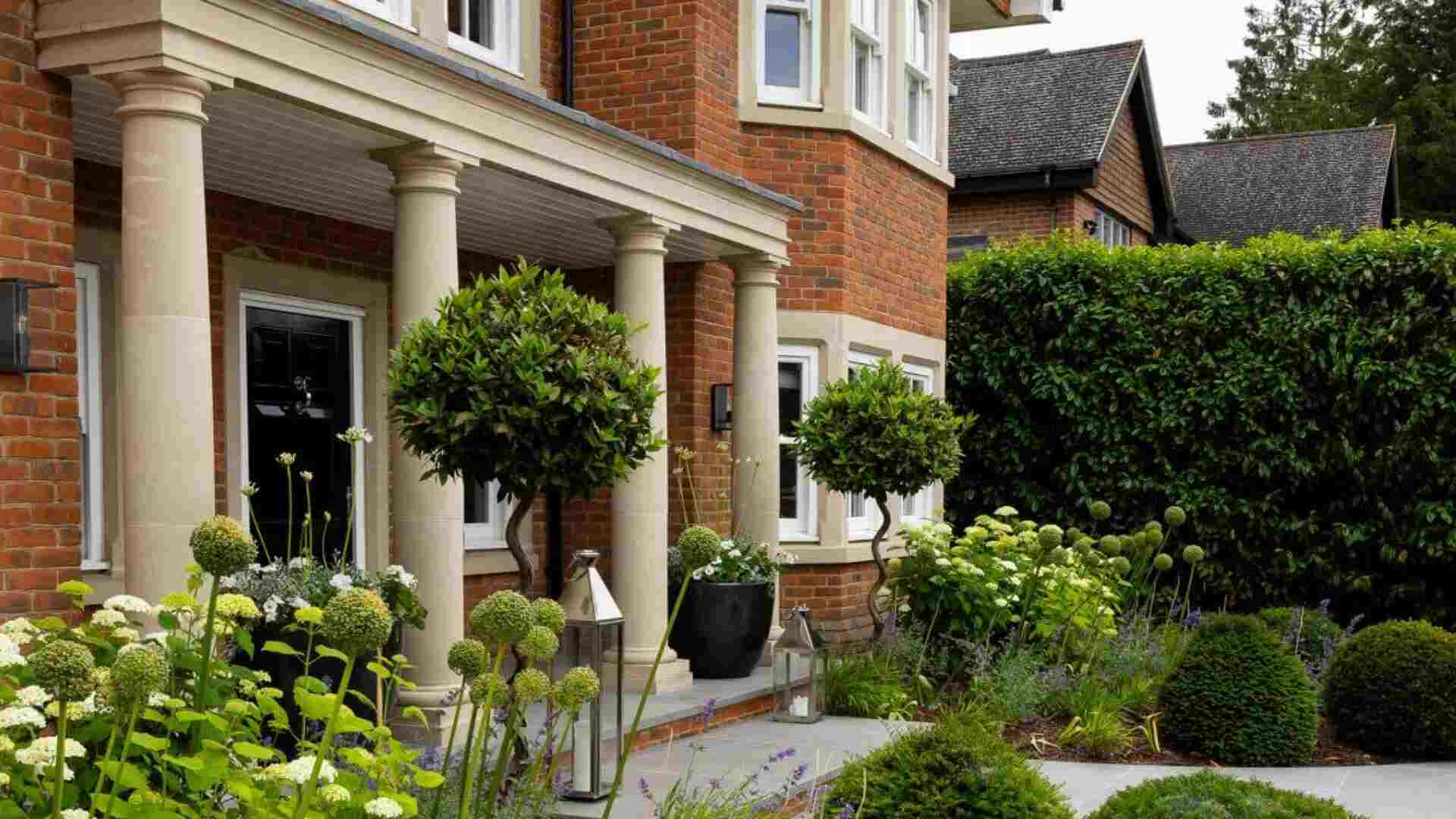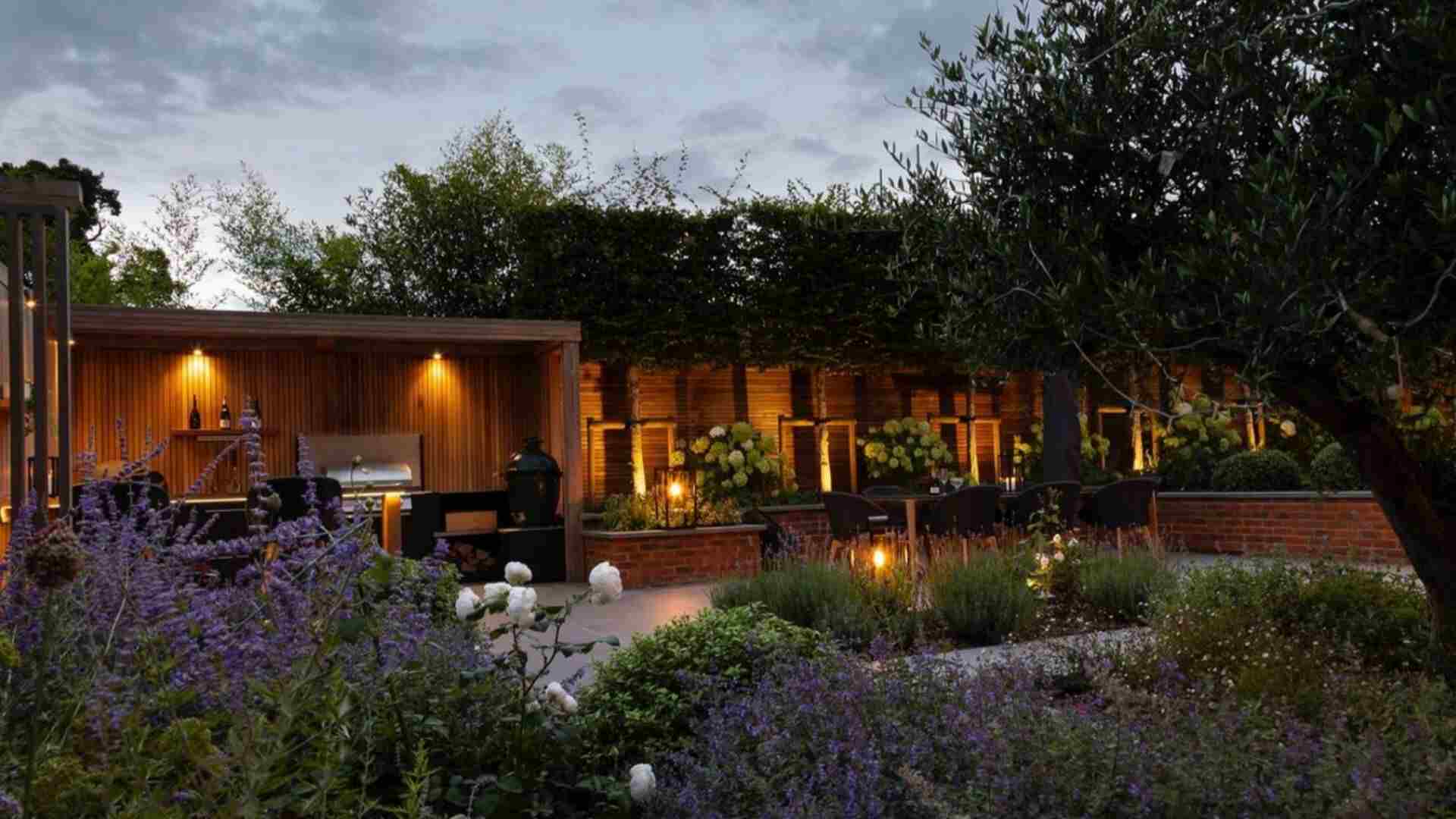Edible landscaping involves filling a green space with edible, food-producing plants, instead of just flowers or non-edible ground cover.
You can adopt edible landscaping practices when designing your garden, which raises the question: what is edible landscape design?
In short, edible landscape design is the process of designing a garden so it supports edible landscaping practices.
Edible landscaping is more than adding a fruit and vegetable patch to your garden. Instead, you assess what your garden space is best suited for, then plant perennials which grow every year.
Creating a traditional fruit and vegetable garden can take a lot of effort, but edible landscape design is less hands-on.
You make the most of relationships between plants, maximise vertical growing space, and use garden design elements. Over time, the result is a wealth of organic, sustainable food, right in your very own garden.
We’ll cover more about edible landscape design below, including how to implement edible landscaping elements in your garden space.
Why Is Edible Landscape Gardening Important?
According to the National Trust’s 2023 State of Nature Report, wildlife in the UK is continuing to decline. Climate change, pollution, loss of habitat, and agricultural methods are behind the loss of our native ecosystems.
Edible landscaping can help by prioritising sustainable food growth, which helps create a healthy ecosystem within your garden.
Cultivating diverse plants helps turn your garden into a sustainable environment for local wildlife, including insects and bees necessary for pollination.
Growing food in an edible landscape ecosystem has the following benefits:
Environmental Benefits
Unlike food from regular supermarkets, food grown in an edible landscape garden won’t travel miles before it’s eaten, which saves carbon emissions. It also saves the need for unbiodegradable packaging, reducing the effect of plastic packaging on the environment.
Several perennial edible plants used in edible landscape design are useful to humans, but they also have benefits to garden wildlife and pollinators. Perennials draw in pollinators like honeybees, which transfer pollen between flowers, producing the next generation of crops and fruit that we eat.
Little Maintenance Required
Once you’ve implemented edible landscaping design principles in your garden, your space won’t require too much maintenance afterwards. You won’t need to dig, water, or sow new seeds, as the perennials grow year after year.
Edible landscape gardens can harbour several organic plant species that are resilient against diseases and disease. Any fruit or vegetables you grow will not require chemical herbicides or fertilisers, which has additional health benefits as well.
Versatile Practice
Edible landscaping garden design ideas can be used in several settings, transforming gardens of various sizes and styles.
You can produce food within domestic home gardens, as well as community gardens and public space locations that could benefit from edible landscaping.
Edible landscapes in greenspaces can give communities access to free vegetables and fruit, which can deliver peace of mind during uncertain periods.
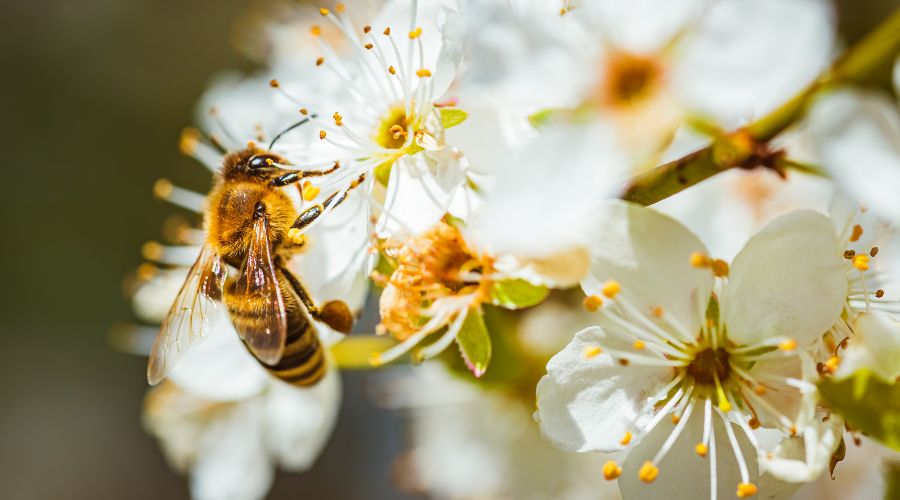
How To Begin Edible Landscape Design
Now that you know some more about edible landscaping, let’s get into how to design your own edible landscape garden.
1. Assess Your Current Garden
To begin, you’ll need to work out which plants will work best in your garden. To do this, ask yourself the following questions:
- What type of soil is in your garden?
- Does your garden receive a lot of sun?
- How large or small is your garden?
- What plants or trees are currently in your garden?
The answers to these questions will help you select autonomous, self-sustaining plants which thrive in your garden.
If your garden doesn’t receive lots of sunlight, hope is not lost! There are lots of shade-loving edibles you can add to your shady garden. Perennials that grow in shady forests, like herbs, do well in these conditions.
In the case of watery, damp gardens, plants like wild angelica and common valerian do well in moist conditions, while lemon balm and various mint plants do well in free-draining soil.
You can find plants that grow in all conditions, it just takes a little research to figure out what will work best in your garden.
At Raine Garden Design, we have over twenty years of experience creating beautiful gardens that suit a range of style and function preferences.
If you’re interested in edible landscaping, we can work with you to create a garden space that supports sustainable food and plant growth. To discuss your ideas in more detail, give us a call at 07702 042559 or check out our garden design process to learn more about what we do.
2. Create A Rough Plan
Before you can start selecting your plants for your edible landscape garden, create a rough landscape design on paper.
Different plants have different space requirements to grow successfully. Your rough design plan can help you assess the number of plants which grow in one area, helping you transform your outdoor space with little issues.
Remember that plants need sufficient airflow to reproduce. Sketching out your space requirements helps you understand your garden better, preventing new plants from overcrowding each other later.
It’s best to give plants more room in the beginning than remove young, contesting plants from an overgrown spot in future.
You can also sketch out a shade and sun map to locate the most and least abundant areas in your garden. Note which areas receive more sunlight, which parts are more shaded, and if there are any changes in soil quality around the space.
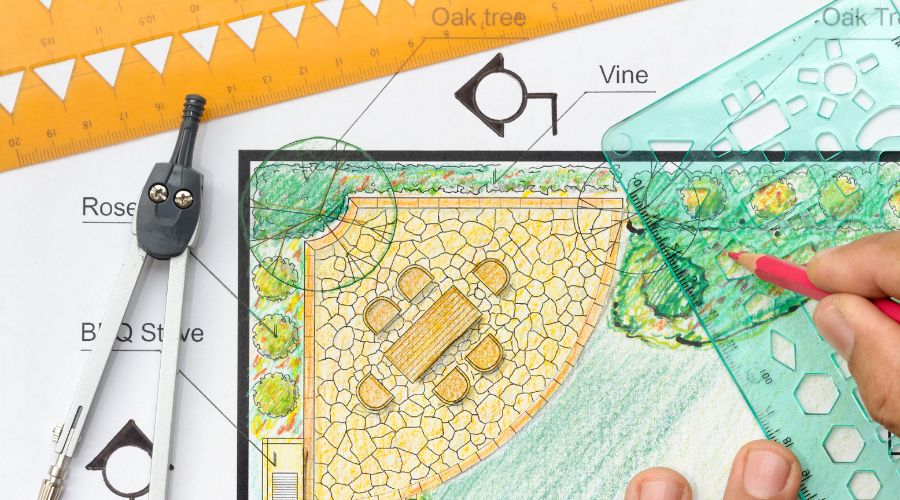
3. Selecting The Best Plants
Once you’ve assessed the answers to the questions above and created a rough space plan, you can begin choosing plants for your edible garden.
Remember that edible landscape design aims to create a low-maintenance space. Don’t go against your garden’s natural conditions. If you need to replenish and fertilise the soil all the time, you’ll be working against the garden’s natural setting.
One way of creating a low-maintenance space is to use plants that fight weed invasion. Native plants like thyme work well as a ground cover, as they naturally suppress weeds growing in areas you don’t want them.
Another sustainable ground cover plant which works well is wild strawberries. These come in different breeds, like woodland strawberries, which thrive in shady conditions. They’ll cover areas where weeds might grow, but as they’re fruit, they work as a sustainable food source too.
Here are some common fruits and vegetables that act as food sources and work well in edible landscape design:
- Artichokes: have a unique shape that can act as a border between plants.
- Asparagus: grows in a fern shape which acts as good ground cover.
- Squashes: has testing vines which look attractive across garden trellises.
- Mint: grows quickly and acts as good ground cover.
- Chard: vibrant orange, pink, or red stalks look great in many gardens.
- Kale: bold green hue contrasts against brighter flowers and acts as a good border.
Edible flowers can also add to your garden through their vibrant colours. People used to eat flowers for medicinal purposes in the past, though this is rarely practised today.
Examples of edible flowers include:
- Chamomile (flower heads only)
- Honeysuckle (flower only)
- Roses (petals with bases removed only)
- Violets (flowers only, roots are toxic)
If you want to add edible flowers to your garden, always do your research to make sure they aren’t poisonous and are suitable for eating.
Once you’ve chosen your plants, remember to consider the space plan you made earlier.
Think about how the plants will look like once they are fully grown. Will the groups survive without overcrowding each other? Will any plants grow taller than the others, preventing shorter ones from receiving adequate sunlight in future?
Always do your research to find out what your plants will look like each season before choosing to plant them in your garden.
To learn more about edible garden planting, check out our companion planting feature at Home & Garden Insider.
4. Make The Most Of Your Space
Edible landscape design principles work well in all types of gardens, not just larger ones. Whether you have a small garden or large yard, it’s better to add edible landscaping gardening elements gradually, instead of thinking of the big picture and transforming everything at once.
Try starting with a small plot, around 9 square metres. Though you can find several plants that suit different soil and climate conditions, it’s best to begin in an area that drains well and receives a minimum of six hours of full sunlight daily.
Once you choose a location, remember that west-facing gardens will soak up warmer afternoon sunlight, while east-facing gardens receive morning sun. Cold-weather plants will do well in east-facing gardens, while warmer-weather plants will do better in west-facing gardens.
With small gardens, you can use fences and walls to their advantage. For instance, when clipped appropriately, vines or apple trees can be trained to climb on walls, making the most of the vertical space and giving you edible produce.
In the case of balconies, you could create a green wall, or add edible potted plants, like herbs or tomatoes, near a light source. Remember to water these regularly, as they can easily wilt without proper care.
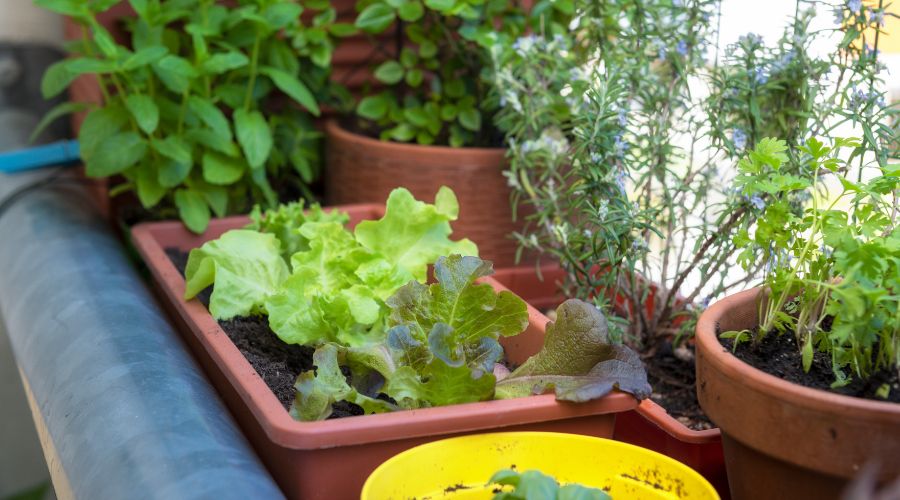
How Long Does Edible Landscaping Design Take?
Creating an edible garden through edible landscaping design is a lengthy process that continues year by year.
You’ll have to wait a while to see the effects of edible landscaping, but don’t let that discourage you from starting. Don’t attempt to plant everything at once, or become frustrated when you aren’t seeing results.
Remember that perennial plants, like asparagus or berry bushes, can take as many as three years to grow a tough root system, which helps them turn powerful enough to grow successfully.
With this in mind, the longer you wait, the more time will pass before you can start harvesting food.
It’s best to begin edible landscaping now, then add to your garden bit by bit annually. If all goes well, your edible garden will be a rewarding, self-sustaining, eco-friendly garden in a few years.
There we have it! We hope this post helped you understand more about edible landscape design and edible landscape gardening practices.
How We Can Help
At Raine Garden Design, our award-winning designer, Raine, has over 23 years of experience in landscape design and a comprehensive understanding of the design and construction process.
Want to know more about our garden design services? Send us an email at studio@rainegardendesign.co.uk or give us a call at 07702 042559 to talk to us about your ideas.
